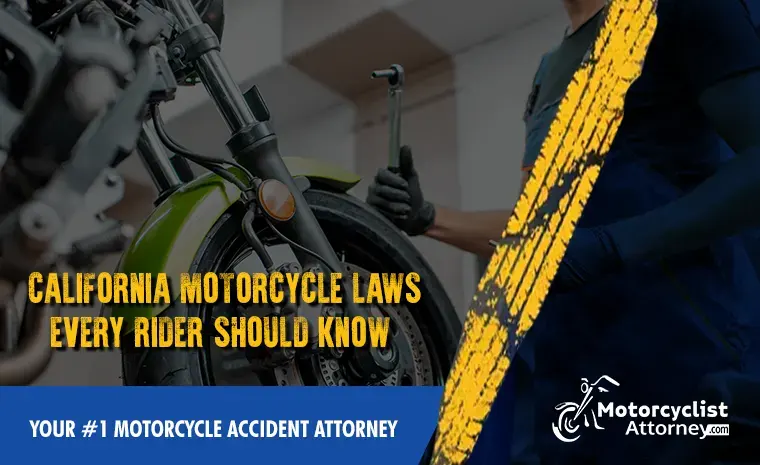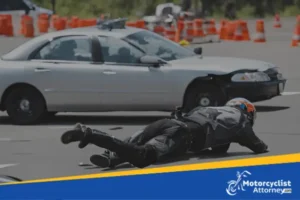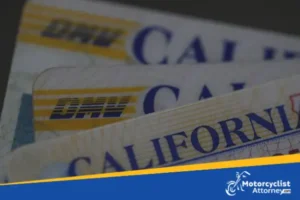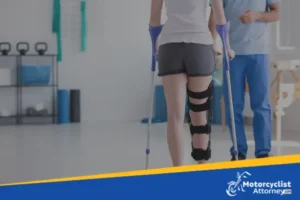
California Motorcycle Laws Every Rider Should Know
With so many motorcycle riders on the road, it’s important to know the laws that pertain to them. California has a number of laws and requirements that all riders should be aware of. Riders who are not familiar with these laws can put themselves and others at risk.
To help riders stay safe and informed, we’ve compiled a list of key California motorcycle laws. We’ve also included some safety tips and rider dos and don’ts. By following these laws and guidelines, riders can help make sure that everyone enjoys a safe ride.
10 Motorcycle Laws You Should Know in California
There are a number of traffic laws that all motorcycle riders should be aware of. These laws help to keep riders safe and ensure that they are following the rules of the road.
1. Article 27, section 27803 of the California Vehicle Code requires all motorcycle riders to wear a helmet while riding. The helmet law applies to both drivers and passengers. In addition, riders under the age of 21 must wear a helmet that meets Federal Motor Vehicle Safety Standards.
2. Riders under the age of 21 must complete a motorcycle rider training course by the California Motorcyclist Safety Program before they can get a motorcycle license. This means that all new riders must complete a motorcycle safety course before they can hit the road.
3. Motorcycles must have a tail light and brake light. As per California Vehicle Code Section 24250, all motorcycles must be equipped with a tail light and brake light. These lights must be visible from 500 feet away.
4. Motorcycles must have at least one mirror. As per California Vehicle Code Section 26708, all motorcycles must be equipped with at least one mirror. This mirror must be mounted on the left-hand side of the motorcycle and positioned so that the rider can see behind them.
5. Motorcycles must have a muffler, which functions as a noise-reduction device. This muffler must be in good working condition and cannot be modified to make the motorcycle louder. They must also have a license plate, which must be securely fastened to the rear of the motorcycle and clearly visible.
6. Motorcycles are not allowed to exceed the speed limit. California Vehicle Code Section 22400 prohibits all vehicles, including motorcycles, from exceeding the posted speed limit. This law is in place to help keep everyone safe on the road. California law also allows lane splitting, which is when a motorcycle rider drives between two lanes of traffic. Lane splitting is only allowed if the riders are going no more than 10 mph faster and the traffic flow is 40 mph or less.
7. Motorcycles must be registered with the California DMV, as per California Vehicle Code Section 4000. Riders must have a valid motorcycle license and vehicle registration to operate their unit on public roads. This is obtained by filling out a registration application and paying the required fees.
8. Motorcycles can have passengers, but they must be properly seated. As per California Vehicle Code Section 27800, motorcycle riders are allowed to carry people on their motorcycles. However, passengers on motorcycles must be properly seated and have access to passenger footrests. In addition, the vehicle must be equipped with a seat that is designed for two people.
9. Motorcycles must have insurance. As per California Vehicle Code Section 16028, motorcycle insurance must meet the minimum liability requirements set by the state of California, which include $15,000 for bodily injury coverage per person, $30,000 for bodily injury per accident, and $5,000 for property damage per accident.
10. Motorcycle drivers must yield the right-of-way to pedestrians who are crossing the street (California Vehicle Code Section 21950). This law is in place to help keep pedestrians safe, and violations can result in a fine.
Motorcycles in California must have:
- A seat where the driver can touch the ground with their feet while seated;
- Handlebars no more than six inches below or above the driver’s shoulder height when standing; and
- One or two lighted headlamps operate whenever it is dark outside.
Knowing these California motorcycle requirements can help keep you safe while riding and avoid costly citations. For more information on California motorcycle laws or to get help after an accident, contact an experienced motorcycle accident attorney.
California Motorcycle and Road Safety Tips
Knowledge of the CA laws is just half the battle – you also need to know how to safely operate your motorcycle. These are basic educational guidelines that even experienced riders often forget or neglect, leading to thousands of preventable bad situations.
- Wear proper gear. In addition to wearing a helmet, which is required by law, riders should also wear other protective gear, such as gloves, boots, and long pants and sleeves. This gear can help protect you from injuries in the event of motorcycle crashes.
- Be visible. Make sure that you are visible to other drivers by wearing bright colors and using your headlights, even during the daytime.
- Ride defensively. This means being aware of other drivers and being prepared to take evasive action if necessary. Defensive riding entails always being on the lookout for potential hazards.
- Don’t drink and ride. Alcohol impairs your judgment and reaction time, making it more difficult to operate a motorcycle safely. According to the National Highway Traffic Safety Administration, alcohol is a factor in about 37% of all motorcycle fatalities.
- Take a motorcycle safety course. If you are new to riding, or if it has been a while since you’ve been on a bike, consider taking a motorcycle safety course. These courses can help refresh your memory on the rules of the road and teach you how to ride defensively.
California is a busy state with a lot of traffic, so it is important for motorcycle riders to know and follow these safety laws. By doing so, they can help keep themselves and others safe on the road.
However, if you do find yourself in the unfortunate situation of an accident due to another rider or driver’s carelessness, know that you may be eligible to get medical bills paid up, property damage coverage, and receive significant financial compensation for your economic and non-economic losses.
How To Claim Compensation After A California Motorcycle Accident
The steps you take immediately following a motorcycle accident can have a significant impact on the outcome of your case. If you or someone you love has been injured in a motorcycle accident, follow these steps to give yourself the best chance at recovering the compensation you deserve:
1. Seek medical attention.
Your health and well-being should be your top priority after an accident. Even if you don’t think you’re injured, it’s important to get checked out by a medical professional as soon as possible. Some injuries, such as traumatic brain injuries and whiplash, may not present symptoms right away.
2. Call the police.
In California, the police must be notified of all accidents that result in injury, death, or property damage. The police will create a report detailing the accident, which can be used as evidence in your case.
3. Gather evidence.
If you are able to do so, take photos of the scene of the accident, including any damage to your motorcycle and any visible injuries you may have sustained. You should also get the contact information for any witnesses to the accident.
4. Speak to an experienced motorcycle accident attorney.
A lawyer will be able to help you navigate the legal process and will fight for your rights to receive monetary compensation. Motorcyclist Attorney is a California-based law firm that specializes in motorcycle accident cases and motorcyclist fatalities. We have a team of skilled lawyers who are ready to help you get the justice you deserve.
5. Don’t give a statement to the other driver’s insurance company.
The insurance adjuster may try to get you to give a recorded statement, but you should politely decline. Anything you say to the adjuster can be used against you and might lower your claim’s value. It’s best to let your lawyer handle all communications.
Accident? Call Motorcyclist Attorney
Contact Motorcyclist Attorney today to schedule a free consultation with our experienced motorcycle attorneys. Our team is knowledgeable about California motorcycle laws and will review your case, so we can advise you on the best course of action.
Call today for a free consultation.
Our motorcycle accident lawyers and case managers speak English and Spanish, so accident victims can be confident that they are in excellent hands.




